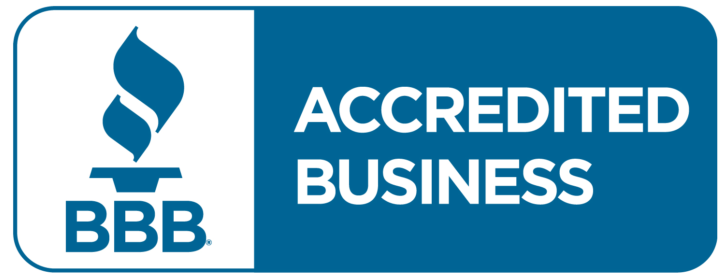
Creating an accurate, detailed legal chart of accounts is an important tool to give you an accurate picture of where your firm’s financials stand. Once set up, this information can give the visibility you need to ensure your firm stays compliant with accounting and trust accounting rules. Moreover, you can use the information from your law firm’s chart of accounts to help determine key financial details about your firm—which is necessary for making data-driven decisions. Having a law firm chart of accounts is more than just an accounting best practice— it’s a tool to keep your firm’s financial data organized. Also, many firms don’t realize how many accounts they must track to accurately reflect the firm’s value. When set up correctly, a law firm chart of accounts provides an accurate picture of your law firm’s financial situation now, and as you move forward.

Legal Accounting 101: Financial Tips for Long-Term Success
- Another benefit was a more comprehensive view of the business’s finances.
- Law firm accounting software can automate bookkeeping tasks and ensure adherence to regulatory standards, enhancing efficiency and compliance.
- It is normally better to use chart of accounts numbering for account codes as this speeds up the entering of bookkeeping transactions using the numeric key pad on a typical keyboard.
- And even within the manufacturing line of business, a manufacturer in the aerospace sector will have a much different looking chart of accounts than one that produces computer hardware or even clothing apparel.
- However, as a lawyer, your priority should be focusing on legal matters, not dealing with the complexities of accounting.
An expense account named Professional fees can be added to monitor costs for hiring professionals. Marketing expenses is another expense account to track promotional costs. The COA also includes accounts for online payment systems to monitor digital transactions. By sorting transactions into specific categories, it helps create accurate financial reports, which are super important for making decisions and showing outsiders, like investors or regulators, how well the business is doing.
Chart of Accounts Maintenance Request Form Template

Law firms also need to manage cash flow, accounts receivable and accounts payable to be financially stable. Implementing and maintaining accounting systems can also be tricky especially when choosing the right legal accounting software. These challenges highlight the need for a solid law firm chart of accounts accounting framework to navigate the complexities of legal financial management. Generating accurate financial statements becomes effortless, allowing for comprehensive reporting on your law firm’s performance.

Accounting and Bookkeeping Best Practices for Law Firms

The chart of accounts for small business template will help you to produce your own chart of accounts, and is available for download in Excel format by following the link below. This column is for information only to indicate whether the account is normally increased by a debit or a credit. For example expense accounts are normally increased by a debit entry, whereas income ledger account accounts are normally increased by a credit entry. The account names will depend on your type of business, but the classification and grouping should be similar to this example chart of accounts for small business. The COA has been a fundamental component of accounting systems for centuries, evolving with accounting practices. While we can’t name the exact date when it became a standard accounting practice, we can trace its evolution through history – from tally sticks to accounting software.
- For example, if you purchase office supplies for your business, you should have an “Office Supplies Expense” account.
- For example, if you’re a personal injury lawyer, your firm’s operating account is considered an asset because it both exists under the firm’s ownership and provides direct financial benefit in the form of cash.
- Read on to learn how to anchor your accounting system with a solid chart of accounts.
- Also, it facilitates monitoring of cash flow and identifies financial trends or anomalies.
- As mentioned, besides the standard five accounts, the chart of accounts may contain additional accounts, created for the sake of more granularity or to cater to a business’s particular needs.
- In accrual accounting, you record revenue when earned and expenses when incurred, regardless of when cash changes hands.
- Remember that the COA is a tool tailored to the specific requirements of the business, so customization is often necessary.
Organize your accounts by category to make it easier to track your law firm’s finances. Some categories you may consider include Bakery Accounting income, expenses, assets, liabilities, and trust accounts. Accounting forms the backbone of every successful business, and law firms are no exception.
- The Industrial Revolution resulted in technological advancements and changes in production methods.
- Some categories you may consider include income, expenses, assets, liabilities, and trust accounts.
- Customizing the chart of accounts on an accounting platform such as Quickbooks Online Advanced makes it easy to track the law firm’s finances.
- Integrating your chart of accounts with CaseFox software streamlines financial management processes for your law firm.

They can help level up your firm and make the legal accounting process even smoother by adding legal accounting and legal practice management software to your firm’s toolkit. Using legal technology can ease the workload of manual tasks while helping your firm meet its goals—avoiding errors, ensuring compliance, and staying organized. It involves a ton of inefficient, manual work—involving a lot of spreadsheets, paper invoices, inputting data entry, and struggles with collections. This is because a professional legal bookkeeper and accountant can help you manage your firm’s revenue and ensure your firm’s financial transactions are handled ethically and accurately. Most small businesses, including small law firms, choose the cash basis of accounting, as this method allows the firm to delay paying taxes on income until the payment comes in the door. Accountants typically take the books and records prepared by a bookkeeper and use them to provide business advice, prepare financial statements, and file tax returns.

